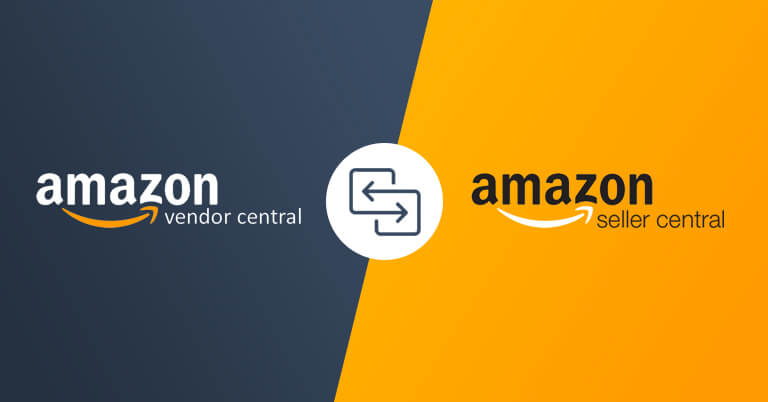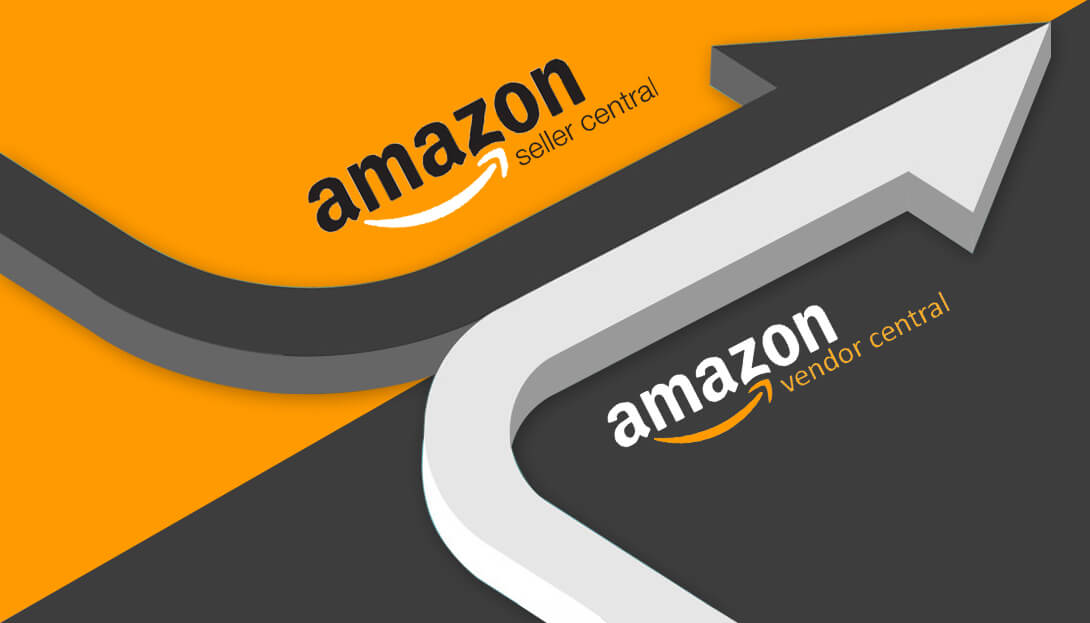
Amazon as a marketplace is evolving at a fast pace and the changes it brings about are oftentimes hard to understand for merchants. For instance, earlier this year, it halted orders from thousands of suppliers without any prior notice or explanation. Panic ensued – rumors spread like wildfire about what the motive could possibly be – until the orders quietly resumed weeks later. This drastic move by Amazon left many merchants puzzled; what to do next. Though Amazon hasn’t formally announced any change to Vendor Central, the idea that the marketplace might adopt a “one vendor” is being widely speculated. Meanwhile vendors are are planning to switch to Amazon Seller Central – and third-party selling – as a solution.
If you are still confused about the difference between the two, here is a brief explanation for you.
Amazon Seller Central – It is a web interface for retailers to market and sell their products directly to customers. Being an account holder will allow you to fulfill the orders you receive from customers on Amazon. You get two options for the same –
- You can take care of everything on your own from shipping to returns for every order that you receive.
- You can leverage Amazon’s “Fulfilled by Amazon” (FBA) program and let Amazon handle all the tasks for you.
Amazon Vendor Central – Here, manufacturers and distributors sell their products in bulk to Amazon. As a supplier, you are called a first-party seller or Amazon vendor seller. Not anyone can have an account using this web interface. Amazon sends the exclusive invitation to register on Vendor Central.
Vendor Central Vs Seller Central
- Seller Central
- Open to online sellers
- Sell directly to Amazon’s customers
- Flexible logistical options
- Quick payment terms
- Brand controls retail pricing
- Restricted advertising options
- Complicated sales process
- Enhanced brand content
- Vendor Central
- Registration by invitation only
- Sell to Amazon
- Fixed logistical options
- Traditional payment terms
- Amazon controls retail pricing
- Multiple advertising options
- Traditional sales process
- A+ content
Still Confused Which One Is Better For You?
Both have individual benefits. However, Seller Central provides better access and complete control over key business operations. Retailers can even set their own rules. Most retailers opt for this because of the flexibility and control that it offers. Besides, the revenue uncertainty that currently surrounds Vendor Central also contributes to why merchants are switching to Amazon Seller Central.
If you are among those vendors whose purchase orders were canceled by Amazon, then Seller Central is the right choice for you to maintain your presence on Amazon. However, if you are still receiving purchase orders but feeling uncertain about the future, you can go for the hybrid approach. In either case, you will get both – more control and security.
Now, you have the answer with you. You know how to make your products stay relevant on Amazon. But, everyone has their skepticism. While some merchants aren’t quite sure how it would work, others may have never sold directly to customers before. Fret not! Here is a simple guide on how you can seamlessly switch from Vendor to Seller Central.

-
Inform The Vendor Manager
Amazon canceling purchase orders does not mean that your contractual agreement with them as a vendor is null and void. It means that you have the right to modify the existing contract with the marketplace. You can do so by formally informing them that you will be switching operations from Vendor Central to Seller Central.
-
Create A Seller Central Account
While Vendor Central requires an official invitation from Amazon Seller Central is open to the public. Therefore, creating an account here is quite easy. You just need to follow the steps mentioned on their website. You don’t need any business contract, meeting or discussion for collaboration. You can simply dive in to start selling.
-
Choose A Fulfillment Option
The next step is where you decide how you want to get the product orders delivered to the end customers. Most merchants on Amazon prefer FBA (Fulfillment by Amazon). FBA allows you to stock up your products in the Amazon warehouse. It takes care of everything that comes after a transaction takes place, from the shipment of purchased products to returns or replacements. FBA is highly recommended if you are an amateur on Amazon or not familiar with the after-sale customer service.
-
Set Your Product Pricing
Being on Seller Central gives you complete control over the pricing of your products. Full control over pricing brings in great opportunities for your business. You can keep a check on the pricing of your competitors, analyze and then decide on a price. You must know that setting a price too high means loss of sales and too low means low ROI.
Besides, it brings in additional responsibilities like sales tax. For instance, in the US, tax rates differ from state to state. So, if you are a US-based retailer using FBA, you need to pay accordingly.
-
Manage Your Inventory
Amazon duly takes care of the inventory, if you are selling through Vendor Central. However, on Seller Central, you are the master. Thus, you need to keep track of product counts and stock levels on your own.
-
Manage Product Content
You must understand that when it comes to product content, Vendor Central and Seller Central are different platforms and require different product content. Switching from Vendor Central will not automatically transfer your product content in your Seller account. Primarily because the latter relies on inventory file templates. These templates carry category-specific files having all product attributes from products you want to list on Amazon Marketplace. You can import these templates directly via an API connection. This will allow you to always keep your product content, pricing, and availability up-to-date.
-
Consider Advertising Options
For Amazon vendor sellers, Amazon takes care of all product-related marketing. However, when it comes to Amazon third-party sellers, they have complete control over product-related marketing. You can consider ways that suit best for your products while looking into how Amazon Advertising can help boost your product visibility.
-
Monitor Performance Analytics
Being a third-party seller on Amazon gives you full control not only over your products but also on their performance. This is why Seller Central offers better quality analytics without any extra cost. You will have seamless access to data like page views, conversion rates, session length, and more. You can use this business-critical information to optimize product listings.
The Hybrid Approach: Get The Best Of Both Worlds

If you have no issues while being on Vendor Central and still wish to get the benefits of Seller Central, then this is for you. With the hybrid approach, you can maintain accounts on both platforms sans making the complete switch to one. It proves to be a perfect alternative for those vendors who:
- are still leveraging Vendor Central for purchase orders.
- want to list seasonal products or products that don’t sell on Amazon’s retail channel.
- seek a backup plan to fulfill orders if Amazon sells more than the in-stock items.
- are worried that Amazon may bring in something which will soon cancel or restrict purchase orders.
How To Get Started With The Hybrid Approach:
The first step is to seek approval from your Vendor Manager. This will help you keep up the cordial business relationship with Amazon. The next step is to ensure that you list different products from the ones Amazon has already listed on your behalf. You have to sell different products as a retailer. Doing the opposite, you will end up competing against yourself. Besides, you may risk your healthy business relationship with Amazon.
Now, when you are registered on Seller Central while still using Vendor account, you have the complete access to manage and maintain your Seller Central account. The rest of the steps remain the same on how to get started with Seller Central as listed above. You are now in charge of ensuring how your products are performing on Amazon. You are also responsible for the safety of your brand. You must ensure whether it is protected or not.
The Final Words
Vendor Central vs Seller Central? Being a seller on Amazon, only you can decide which one is best for your business – if it needs a complete switch or the hybrid approach will do. No matter which one you choose, you are safeguarding your business on Amazon. You will enhance your products’ visibility while gaining more control over your Amazon Seller Account.
Make An Easy Switch From Vendor To Seller With Data4Amazon
Made up your mind to switch from Vendor Central to Seller Central? Our Amazon experts at Data4Amazon know what you need for making this big switch. They are well versed in all the technicalities involved in the process. Reach us at info@data4amazon.com and have the best at your assistance.

